| Insects generally dominate freshwaters in terms of species number, biomass and productivity. They have a variety of morphological adaptations for aquatic life. For breathing, some diving beetles (Coleoptera) and bugs (Hemiptera) entrap an air bubble beneath the elytra (beetles) and hemelytra (bugs) within the hydrofuge. The bubble can last for hours or days. Some adult beetles and bugs have an expanse of hydrofuge to form a layer of air around them. This oxygen layer is known as a plastron and is replenished by diffusion from the surrounding water allowing these insects to stay under water permanently. Many other nymphal insects tend to have gills - abdominal, rectal or around the mouthparts, to enable under water breathing. Some fly larvae (Diptera) and damselfly nymphs (Odonata) swim by serpentine action. Dragonfly larvae (Odonata) are capable of jet propulsion by forcing air from the rectum. Most bugs (Hemiptera) have modified legs - paddle-like, fringed with hair. Fast swimmers have bodies that are flattened to be aqua dynamically streamlined. Surface dwelling bugs have non-wettable hairs (hydrofuge) that allow them to rest upon and move across the surface of the water. Insects can be placed into 2 groups on the basis of life cycle stages, Exopterygota and Endopterygota.
Exopterygota undergo a slight metamorphosis. The adults develop from nymphs that go through a series of moults, becoming progressively more like the adults in structure. Immature dragonflies are correctly called larvae, even though there is not a complex metamorphosis, because they differ significantly (more so than damselfly nymphs) from the adult form (Tillyard 1917). The wings develop externally from the wing buds. This group includes Plecoptera, Ephemeroptera, Odonata, and Hemiptera.
Endopterygota undergo a complex metamorphosis. The immature stages are called larva (singular) or larvae (plural). The larval structure differs significantly from the adult structure. The metamorphosis involves a resting, non-feeding pupal stage. This group includes Neuroptera, Megaloptera, Mecoptera, Diptera, Coleoptera, Hymenoptera, Lepidoptera and Trichoptera.
|
| Descriptive Features:
Larva:
head sclerotised but sometimes retractile
thorax and abdomen not always clearly defined
never with wings
legs present or absent
free swimming or case constructing
Total lenth: 1.8 - 25.0
mm
Nymph:
head distinct
body clearly defined into thorax and abdomen
always with jointed legs on thorax
wing pads present on thorax
free swimming
Total length: 4.0 - 50.0 mm
Pupa:
head distinct
body not always clearly defined into thorax and abdomen
never with wings, but developing wing pads may be visible
legs absent, present or fused to body
totally or partially enclosed in case or cocoon, when alive
Total length: 2.0 - 25.0 mm
Aquatic
adult:
distinct head bears a single pair of antennae
body clearly defined into thorax, and abdomen
winged or wingless
always with jointed legs on the thorax
free swimming
Total length: 1.0 mm - 11 cm
|

|
|
| |
| Taxonomic Checklist: Orders
Coleoptera (beetles)
Diptera (flies, midges, mosquitoes)
Ephemeroptera (mayflies)
Hemiptera (bugs)
Lepidoptera (moths)
Mecoptera (scorpionflies)
Megaloptera (alderflies, dobsonflies)
Neuroptera (lace wings, spongeflies)
Odonata (damselflies, dragonflies)
Plecoptera (stoneflies)
Trichoptera (caddisflies)
|

|
|
| |
Distribution: Australia wide
Sensitivity Rating: SIGNAL grade 2 to 10. Insects form the major portion of indicator animals used in river health assesment and monitoring. It is necessary to identify insects to at least order and preferably family level to gain accurate environmental health information.
Functional Feeding Group: shredders, predators, scrapers, gathering collectors, macrophyte piercers, filtering collectors
|

|
|
| Ecology: Insects occur in a wide variety of habitats from lowland rivers and lakes to high mountain streams, with representatives occurring in both fast and slow flowing waters. They may be crawlers, climbers, burrowers, sprawlers, swimmers, striders, cryptic, clingers, hiders, skaters, divers, bottom feeders, scrapers, case constructors or fixed retreat builders. So insects can be found in all areas of freshwaters, i.e. amongst vegetation, in the substratum, attached to submerged objects or swimming freely in the water column. Insects have a wide variety of feeding habits including, detritivores, herbivores, carnivores, shredders, filter feeders, collectors, omnivores, piercers, suckers, engulfers.
|
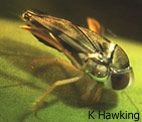
|
Hemiptera
(true bugs) |
|
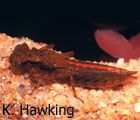
|
Odonata
(dragon, damselflies) |
|

|
Ephemeroptera
(mayflies) |
|

|
Trichoptera
(caddisflies) |
|
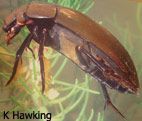
|
Coleoptera
(beetles) |
|
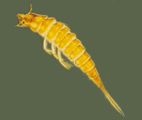
|
Coleoptera
(beetle larva) |
|
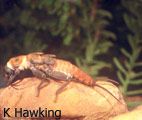
|
Plecoptera
(stoneflies) |
|
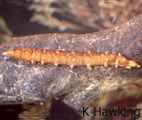
|
Diptera
(true flies) |
|
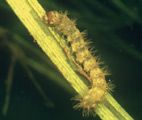
|
Lepidoptera
(caterpillars) |
|

|
Megaloptera
(alderflies, dobsonflies) |
|
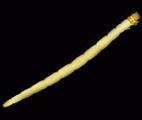
|
Mecoptera
(scorpionflies) |
|
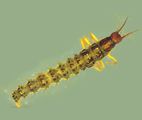
|
Neuroptera
(spongeflies, lacewings) |
|
|
| |
| Information Sources: Williams 1980, Hawking & Smith 1997, Tillyard 1917, Ingram et al 1997, Davis & Christidis 1997
|
More ››› key to orders 
|
|